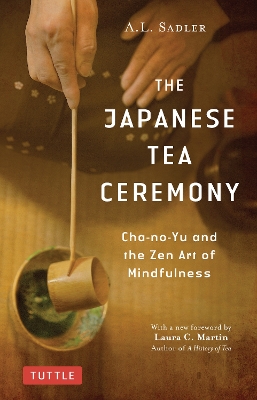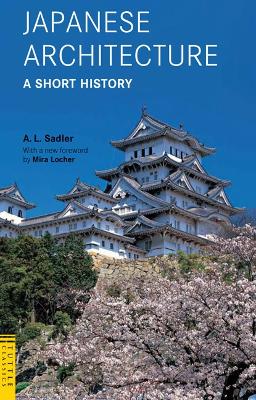Tuttle Classics of Japanese Literature
2 total works
The Japanese Tea Ceremony is a detailed examination of the five-centuries-old tea ceremony-or Cha-no-Yu in Japanese, literally "hot water for tea"-a cornerstone of Japanese culture and a core practice of Zen Buddhism.
Framed by intricately choreographed steps, the tea ceremony is as much about the search for enlightenment as it is about serving tea. Within the serenity of the tea room, the ceremony, with its highly formal structure, becomes an object of focus for meditation. As the water is heated and the tea is served, the ultimate goal is losing the sense of self while gaining inner peace. The path to mindfulness runs through the center of the tea ceremony.
Abundantly illustrated with over 160 drawings and 40 color photos showing every aspect of the ceremony, this book takes readers on a complete tour of furniture and utensils, teahouses and gardens, and numerous other features of Cha-no-Yu. It also delves into the many disciplines included within the broader framework of the tea ceremony-Japanese art, calligraphy, flower arrangements, architecture, gardening, and exquisite handicrafts. Learn more about the experiences of masters of the tea ceremony over the centuries and histories of the various schools and traditions of the art of tea. Full-color photos of tea bowls, teahouses, and gardens reveal the exquisite artistry of the cult of tea and this important Japanese tradition.
With a new foreword by award-winning author Laura C. Martin, The Japanese Tea Ceremony is a fascinating exploration of the ritual and Zen philosophy of one of Japan's greatest customs, truly "an epitome of Japanese civilization."
Framed by intricately choreographed steps, the tea ceremony is as much about the search for enlightenment as it is about serving tea. Within the serenity of the tea room, the ceremony, with its highly formal structure, becomes an object of focus for meditation. As the water is heated and the tea is served, the ultimate goal is losing the sense of self while gaining inner peace. The path to mindfulness runs through the center of the tea ceremony.
Abundantly illustrated with over 160 drawings and 40 color photos showing every aspect of the ceremony, this book takes readers on a complete tour of furniture and utensils, teahouses and gardens, and numerous other features of Cha-no-Yu. It also delves into the many disciplines included within the broader framework of the tea ceremony-Japanese art, calligraphy, flower arrangements, architecture, gardening, and exquisite handicrafts. Learn more about the experiences of masters of the tea ceremony over the centuries and histories of the various schools and traditions of the art of tea. Full-color photos of tea bowls, teahouses, and gardens reveal the exquisite artistry of the cult of tea and this important Japanese tradition.
With a new foreword by award-winning author Laura C. Martin, The Japanese Tea Ceremony is a fascinating exploration of the ritual and Zen philosophy of one of Japan's greatest customs, truly "an epitome of Japanese civilization."
This timeless guide to Japanese architecture is of enormous historical importance to the understanding of Japanese design and culture.
Pioneering Japanologist A. L. Sadler's invaluable study of Japanese architecture first appeared in 1941. Considered a classic in its field, unequaled in clarity and insight, Japanese Architecture A Short History is a lucid and uncomplicated introduction to this important aspect of Japanese culture. Beginning with the earliest evidences from prehistory and ending with the Edo period, when Japan attained stature as a modern state, Japanese Architecture is as relevant today as it was in 1941.
The book includes an overview of Japanese domestic architecture as it evolved through successive periods of history and perfected the forms so widely admired in the West. Of particular importance in this respect are the four concluding chapters, in which the distinctive features of the Japanese house are presented in clear detail. The architecture book also contains excellent illustrations, which show details of planning and construction.
Pioneering Japanologist A. L. Sadler's invaluable study of Japanese architecture first appeared in 1941. Considered a classic in its field, unequaled in clarity and insight, Japanese Architecture A Short History is a lucid and uncomplicated introduction to this important aspect of Japanese culture. Beginning with the earliest evidences from prehistory and ending with the Edo period, when Japan attained stature as a modern state, Japanese Architecture is as relevant today as it was in 1941.
The book includes an overview of Japanese domestic architecture as it evolved through successive periods of history and perfected the forms so widely admired in the West. Of particular importance in this respect are the four concluding chapters, in which the distinctive features of the Japanese house are presented in clear detail. The architecture book also contains excellent illustrations, which show details of planning and construction.

